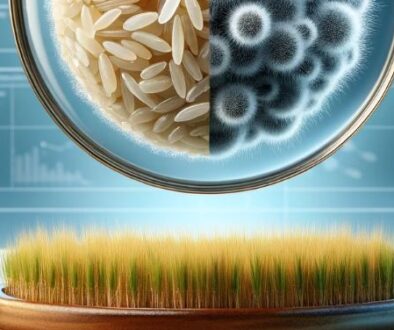Cells simulate the absorption of synthetic tripeptides in the body
Explore the absorption of rice-derived tripeptides in Caco-2 cells, revealing insights into intestinal nutrient transport and pharmaceutical potential.
Key words: rice peptide, ACE inhibitory activity, antihypertensive effect, Caco-2 cell
Introduction
The Caco-2 cell line, derived from human colon adenocarcinoma cells, differentiates in vitro into a continuous monolayer with microvilli structures, closely resembling the small intestine in terms of morphology, enzymatic markers, and permeability characteristics. Thus, it is widely used as an in vitro model for studying small intestinal absorption. Research on the absorption of milk-derived peptides in the small intestine is primarily conducted through the transport of single peptides or simple mixtures of synthetic peptides across the Caco-2 cell monolayer membrane. The main site of nutrient and drug absorption in humans is the small intestine, with a transit time of about 2-4 hours. Most nutrients are absorbed by passive diffusion, depending on their molecular weight, degree of ionization, and lipophilicity. The transport mechanism of rice-derived active peptides in the human small intestine remains unclear. Using RP-HPLC, Chen Ji-wang and colleagues isolated two tripeptides, VNP and VWP, from rice active peptides. This experiment focuses on the transport and uptake processes of rice active peptides and synthetic tripeptides.
Materials and Methods
Materials and reagents included the Caco-2 cell line, tripeptides VNP (Val-Asn-Pro) and VWP (Val-Trp-Pro), fetal bovine serum, phosphate-buffered saline, HBSS buffer, DMEM medium, non-essential amino acids, L-glutamine, penicillin, streptomycin, fluorescein sodium, sodium deoxycholate, Gly-Pro, Wortmannin, and an alkaline phosphatase (AKP) assay kit. Key instruments and equipment featured high-performance liquid chromatography (HPLC), a Sedex 90 evaporative light scattering detector, CO2 incubator, inverted microscope, purification workbench, centrifuge, Milli-Q water system, and an enzyme-linked immunosorbent assay reader.
Experimental Methods
The contents of VNP and VWP in rice active peptides were determined using chromatographic conditions tailored for optimal detection. Caco-2 cells were cultured in DMEM medium supplemented with fetal bovine serum, L-glutamine, non-essential amino acids, penicillin, and streptomycin, and incubated at 37°C with 5% CO2. The integrity and polarity of the Caco-2 cell monolayer were verified through measurements of transepithelial electrical resistance (TEER) and alkaline phosphatase (AKP) activity, respectively. The permeability of the cell monolayer was assessed using fluorescein sodium. Cytotoxicity assays determined the safe concentration levels of rice active peptides and VNP for transport experiments.
Results and Analysis
The contents of VNP and VWP in rice active peptides were found to be 18.51% and 1.29%, respectively. The study analyzed the difference in transport and uptake between rice active peptides and synthetic tripeptides, focusing on VNP due to the low content of VWP. The Caco-2 cell model was successfully established, showing consistent increase in TEER values over time, indicating a complete and tight monolayer. AKP activity was predominantly higher on the apical side, suggesting cell polarization. The apparent permeability coefficient (Papp) of fluorescein sodium was found to be 1.98×10^-7 cm/s, indicating the model’s suitability for simulating small intestinal absorption.
The cytotoxicity experiments showed that rice active peptides promoted Caco-2 cell growth at concentrations below 2 mg/mL, while inhibiting growth at higher concentrations. The safe concentration for transport experiments was set at 2 mg/mL for rice active peptides and 1 mg/mL for VNP. Transport studies revealed concentration-dependent permeation of VNP across the Caco-2 cell monolayer, with a Papp value of 3.88×10^-6 cm/s, indicating moderate absorption.
Conclusion
The study established a reliable Caco-2 cell model to simulate intestinal absorption, demonstrating the potential of rice active peptides and synthetic tripeptides in nutrient transport and absorption. It revealed that VNP absorption is mediated mainly by paracellular transport, with no significant inhibition by Gly-Pro or Wortmannin, but a marked enhancement by sodium deoxycholate. These findings contribute valuable insights into the absorption mechanisms of dietary peptides and their potential for enhancing human nutrition and drug delivery.
For more further detailed information of this research, feel free to contact our team for asssistance.
The original research is done by WANG Shen,GONG Zhiyong(School of Food Science And Engineering, Wuhan Polytechnic University, Wuhan,430023, China) The ariticle ID is: doi: CNKI:CDMD:2.1015.537891












